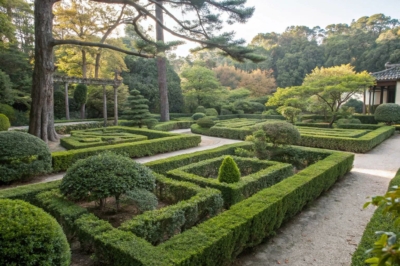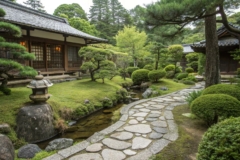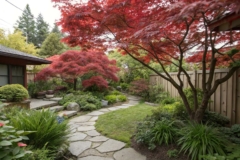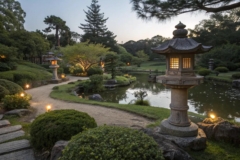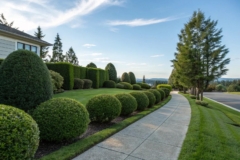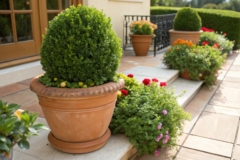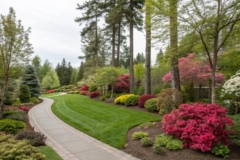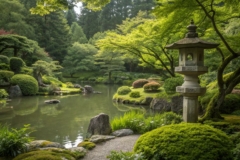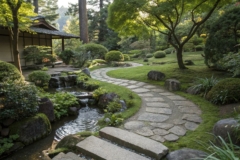1. Enhance Courtyard Gardens
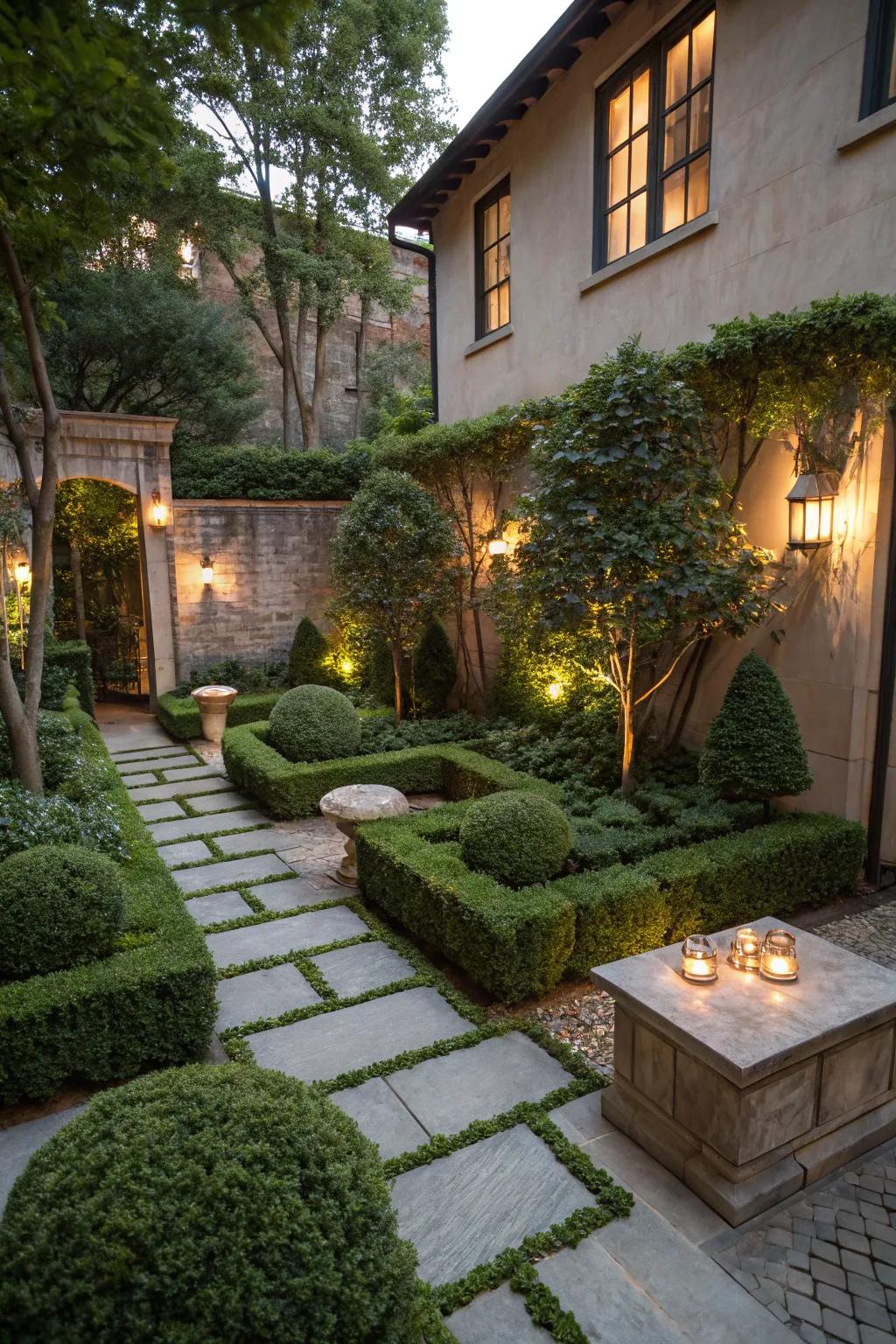
For a peaceful atmosphere, incorporate Japanese boxwood into your courtyard garden. Their compact size makes them ideal for creating a serene and inviting space, just like in my own courtyard.
Might be a good match:
- Outdoor LED Pathway Lights: Illuminate your garden paths with elegant LED lights for a warm and inviting ambiance.
- Decorative Garden Stone Path: Enhance your courtyard with durable stone paths to create a classic and charming walkway.
- Weather-Resistant Outdoor Lanterns: Add delightful lighting accents with stylish lanterns for a cozy courtyard environment.
2. Accent Water Features
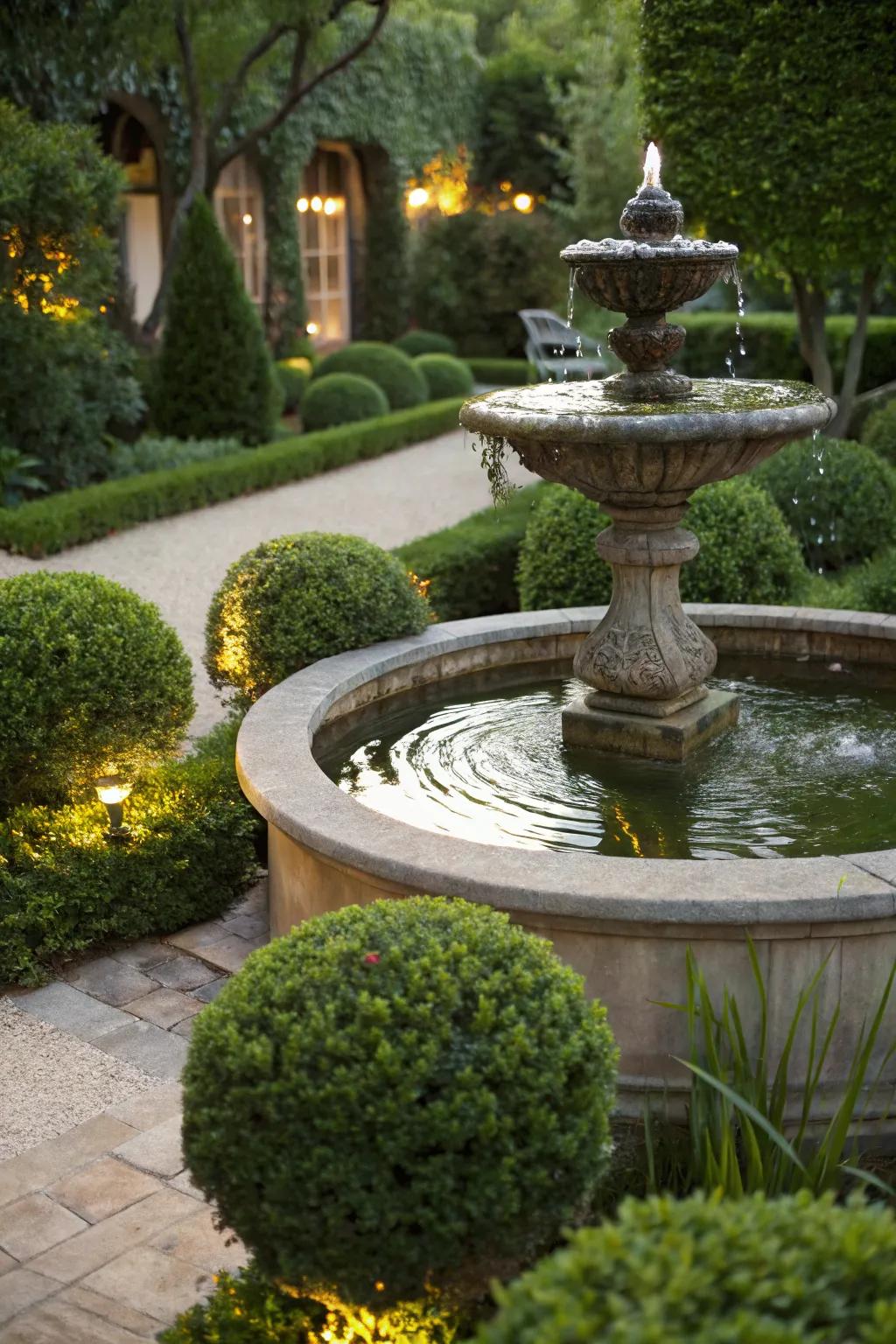
Surround your water features with Japanese boxwood for a refreshing, natural vibe. I love how they enhance the tranquility of my backyard pond.
Products that could assist:
- Outdoor Water Fountain: Enhance tranquility with a decorative fountain, perfect for your garden oasis setup.
- LED Pathway Lights: Illuminate your landscape beautifully, creating a serene nighttime ambiance in your garden.
- Japanese Boxwood Plants: Create lush borders around your water features with vibrant, easy-care boxwood shrubs.
3. Highlight Stairs
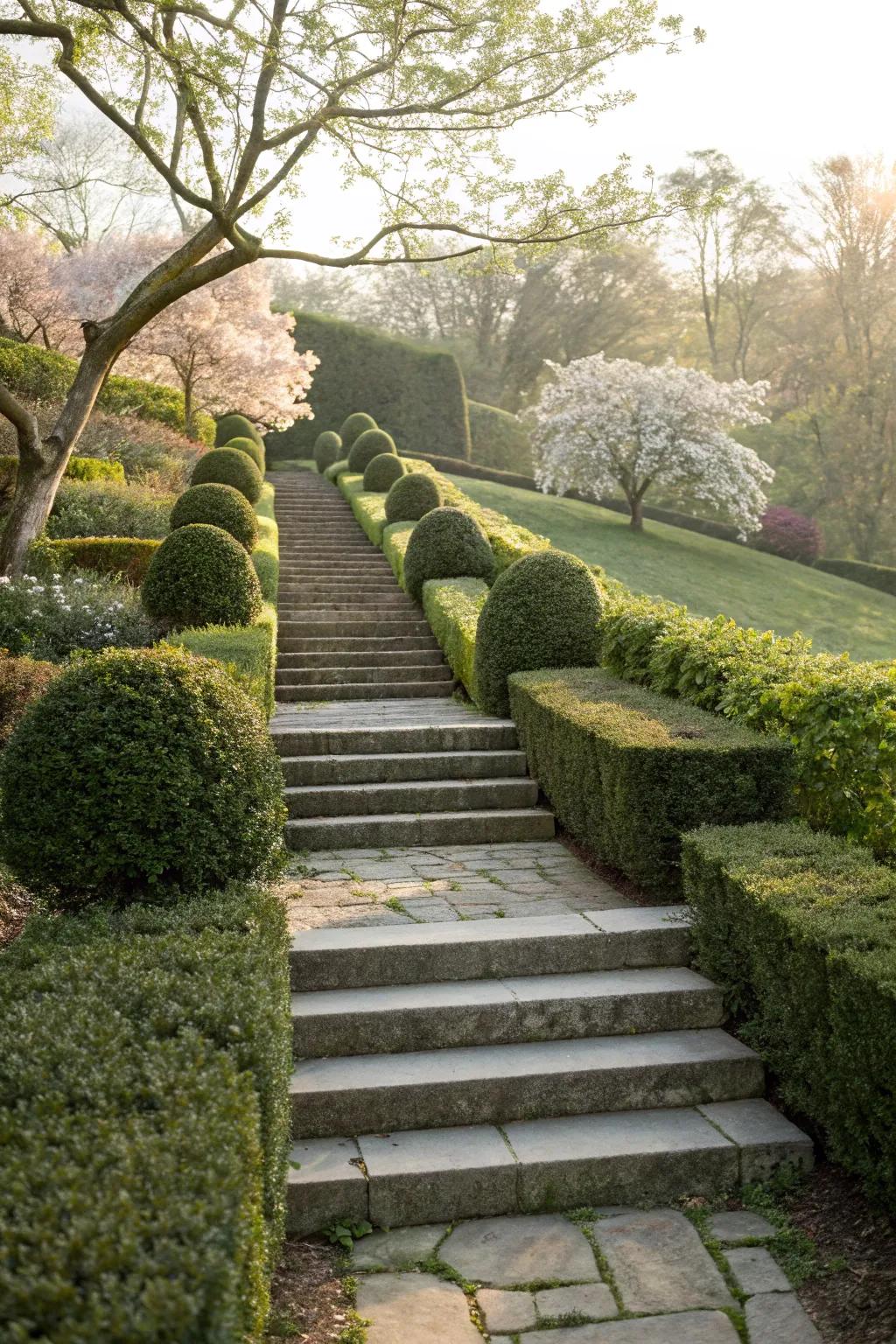
Use Japanese boxwood to highlight stairs in your garden for an elegant touch. I’ve lined my garden steps with them, and they frame the area beautifully.
Check if these fit your needs:
- Outdoor Solar Pathway Lights: Illuminate your garden steps elegantly with eco-friendly solar pathway lights for a stunning evening glow.
- Decorative Stone Edging Border: Enhance your stair aesthetics using decorative stone edging for a refined garden appearance effortlessly.
- Garden Statuary Figurines: Add character to your garden stairs with charming statuary figurines, perfect for a personalized touch.
4. Decorate Entrances
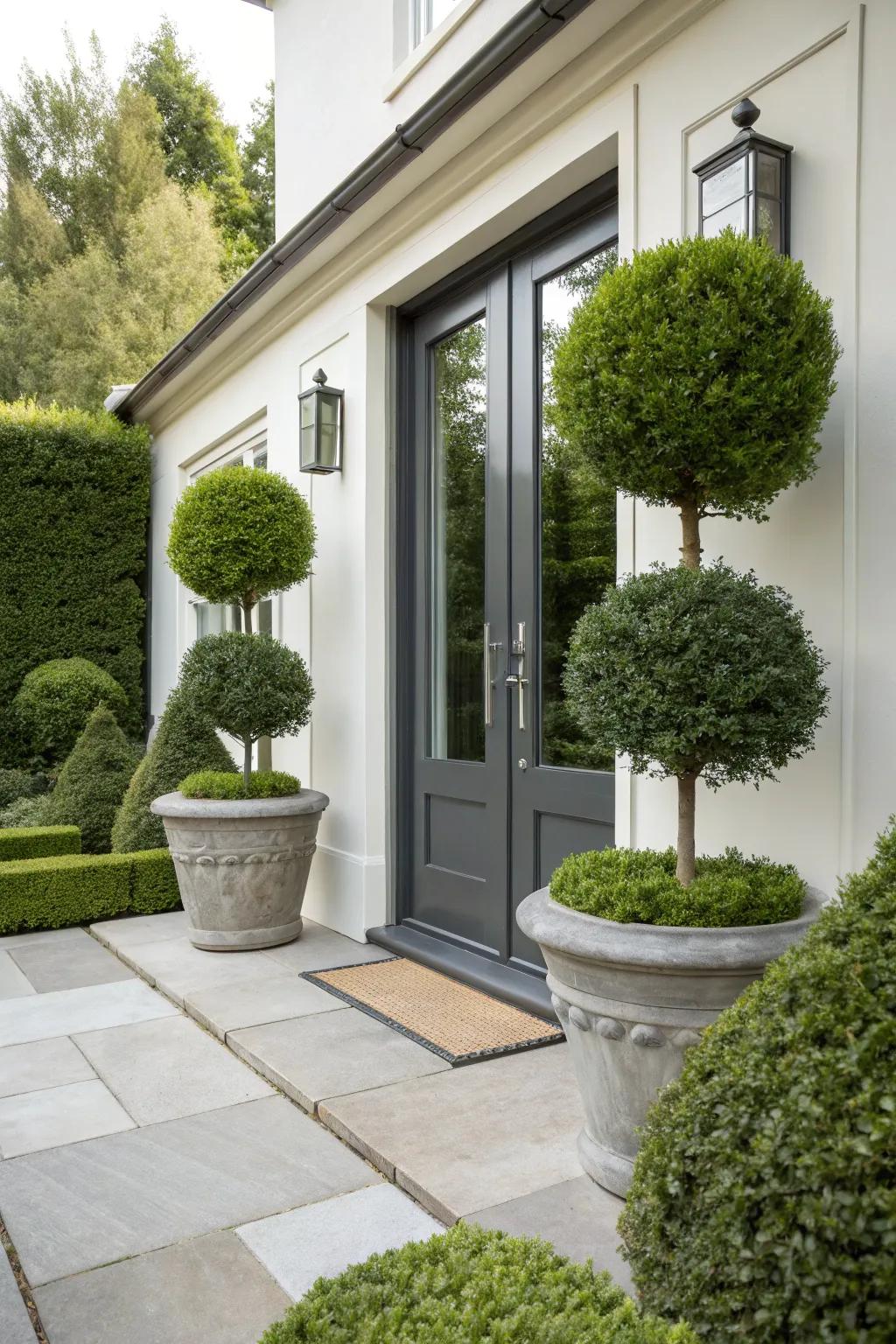
Make a grand entrance with potted boxwood flanking your front door. I love how they create a welcoming and sophisticated vibe at my home’s entrance.
Explore these options:
- Ceramic Plant Pots: Enhance your entrance with stylish ceramic pots for a sophisticated touch.
- Artificial Japanese Boxwood Topiary: Add evergreen charm with maintenance-free artificial boxwood for year-round elegance.
- Exterior Wall Sconce Lighting: Illuminate your entrance with elegant wall sconces for an inviting atmosphere.
5. Create a Formal Garden
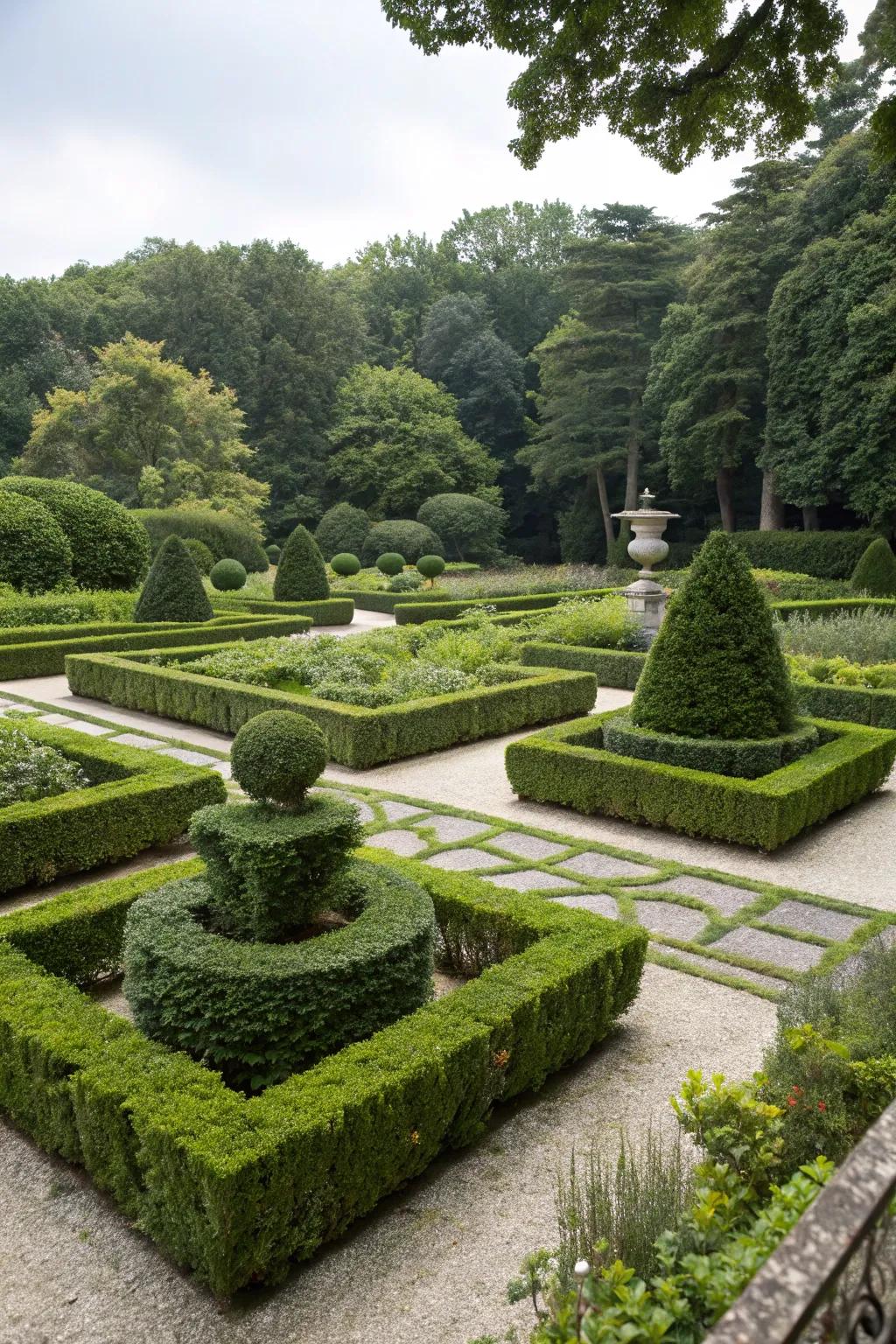
Japanese boxwood is perfect for creating formal gardens with its neat and tidy appearance. I’ve used them in my backyard to form symmetrical patterns, and they never fail to impress visitors.
Useful items to consider:
- Garden Hedge Shears: Trim your boxwood precisely for that perfect symmetrical pattern in your formal garden.
- Decorative Garden Urn: Enhance your formal garden with elegant urns, adding a touch of classic sophistication.
- Boxwood Fertilizer: Nourish your Japanese boxwood for lush growth and a more vibrant formal garden.
6. Soften Hardscape
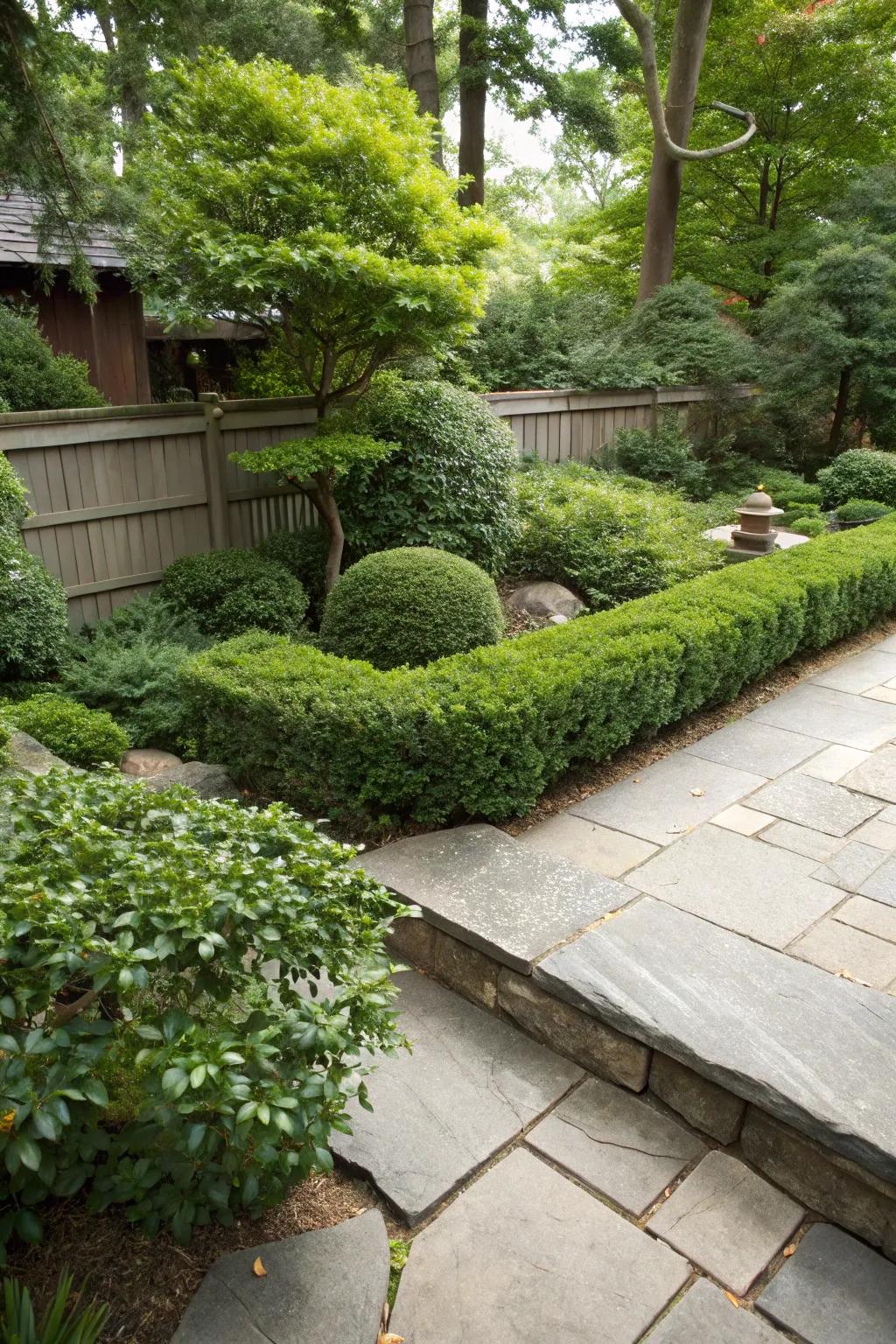
Soften the look of hardscape areas by incorporating Japanese boxwood. I’ve used them around my patio, and they provide a lush, green contrast to the stone.
Give these a look:
- Garden Landscape Edging: Enhance your patio with versatile landscape edging for a clean, defined border effortlessly.
- Outdoor Planter Boxes: Use stylish outdoor planters to add layers and height around your hardscape areas seamlessly.
- Japanese Boxwood Plants: Beautify your patio with lush, green Japanese boxwood plants for a natural look instantly.
7. Create a Green Screen
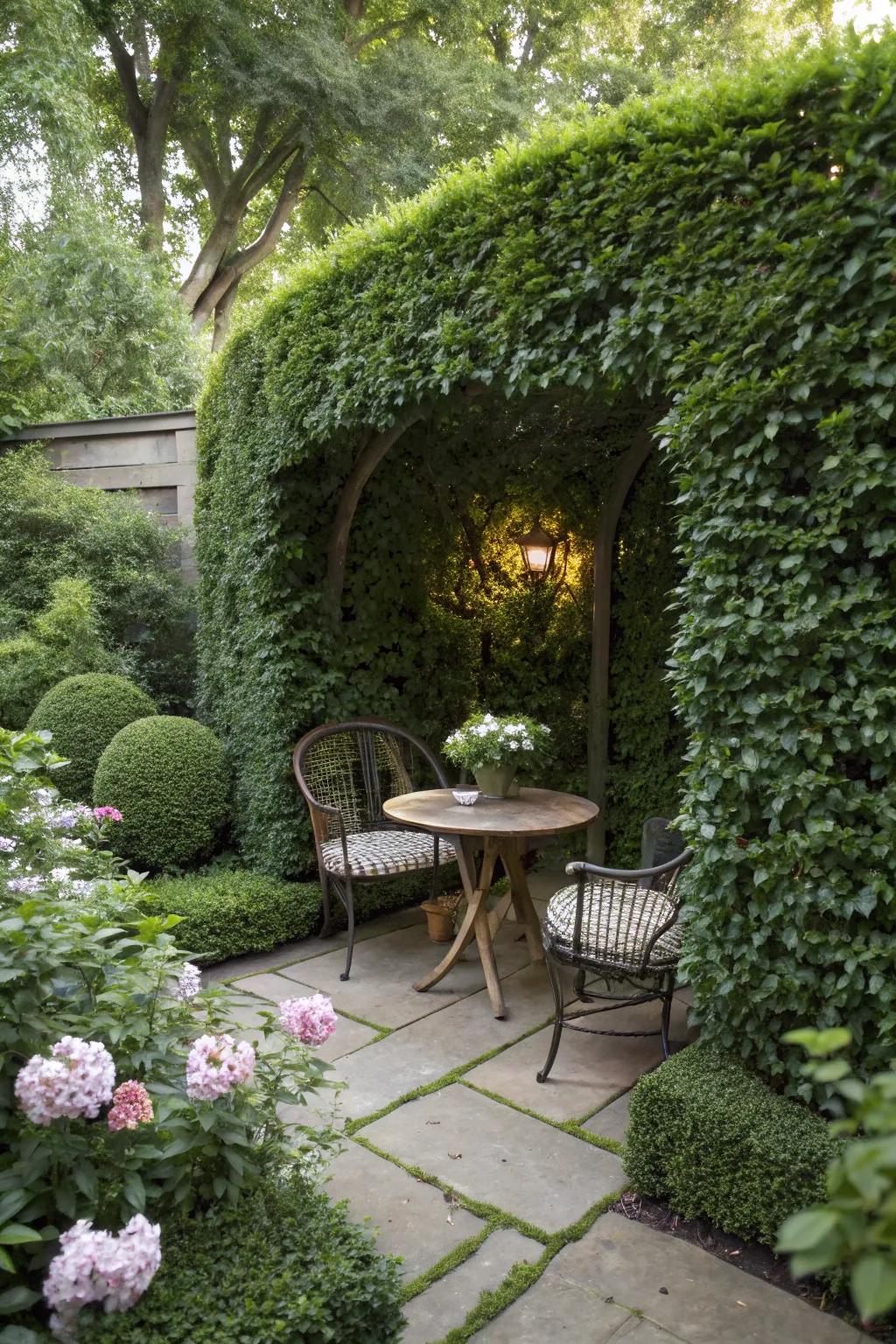
For a bit of privacy, grow Japanese boxwood as a green screen around your outdoor seating area. In my garden, they’ve created a lush, secluded retreat.
Check these products out:
- Garden Trellis Arch: Enhance your outdoor space with a sturdy trellis arch, perfect for supporting climbing plants.
- Outdoor Solar String Lights: Illuminate your garden retreat with eco-friendly solar string lights, adding ambiance and warmth.
- Patio Furniture Set: Relax in style with a cozy and durable patio furniture set for your garden hideaway.
8. Seasonal Decoration
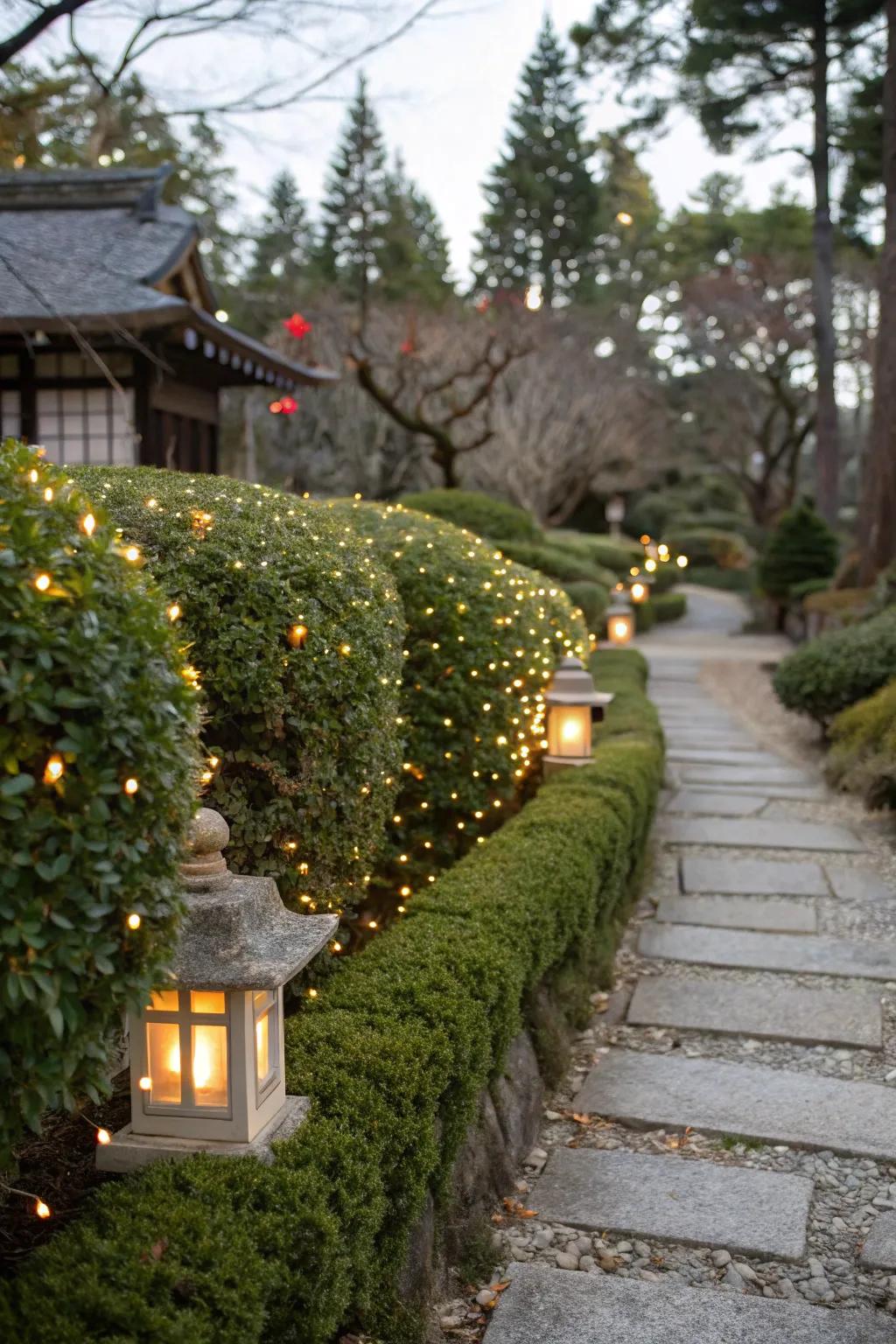
During the holidays, decorate your Japanese boxwood with twinkling lights for a magical touch. In my garden, they add a festive sparkle that’s hard to beat.
Maybe worth checking out:
- Outdoor Solar String Lights: Illuminate your garden effortlessly with eco-friendly solar string lights for a festive glow.
- Weatherproof LED Fairy Lights: Add a twinkling charm to your greenery with durable, weatherproof LED fairy lights.
- Battery-Powered Mini Light Set: Decorate your boxwood with ease using a versatile, battery-powered mini light set.
9. Planter Perfection
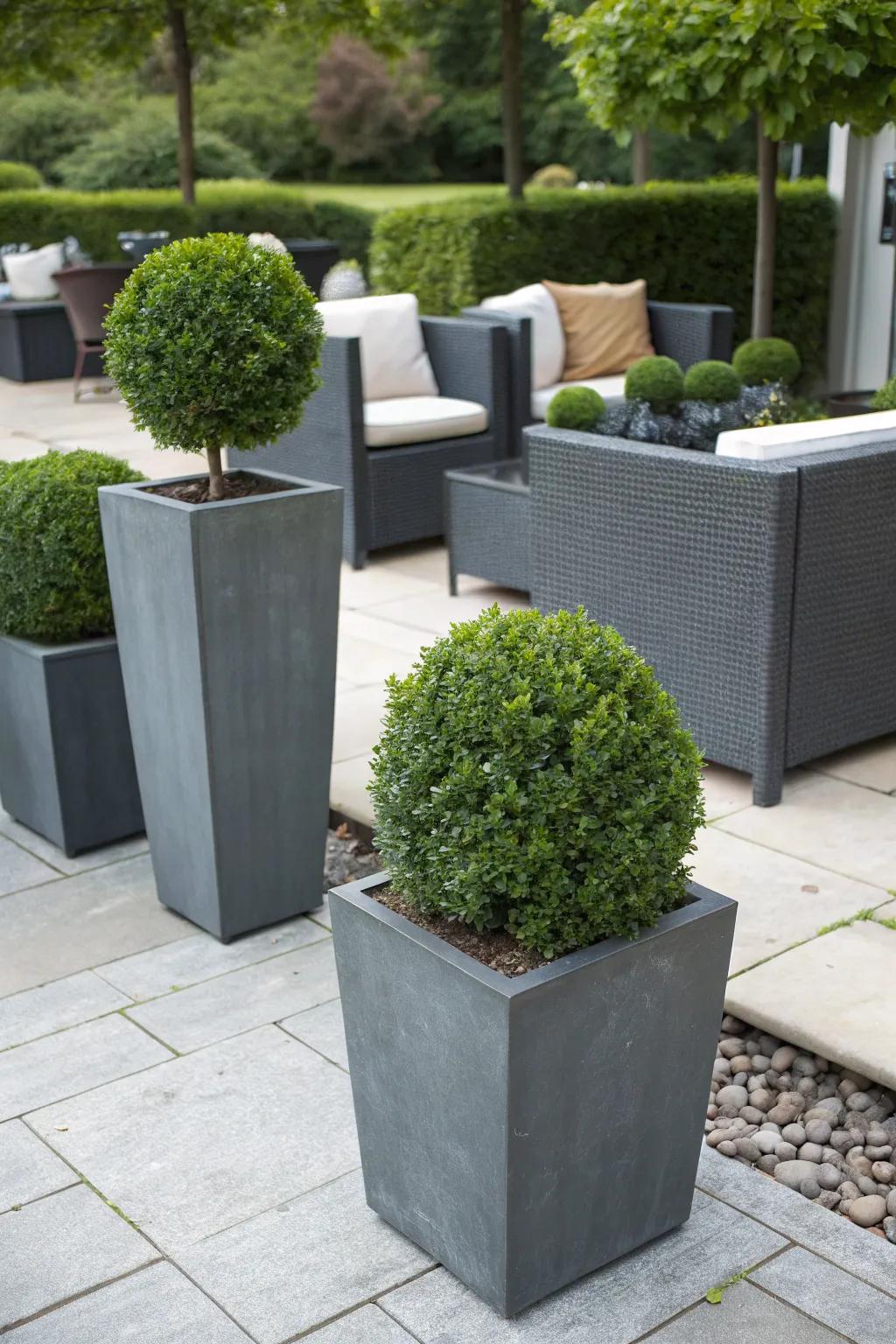
Consider using Japanese boxwood in garden containers for a flexible design option. I adore having them in pots on my patio, which I can move around to suit my mood.
A few things you might like:
- Tall Square Planter: Transform your patio with these sleek tall square planters to elevate your Japanese boxwood.
- Modern Fiberstone Planter: Enhance your garden’s sophistication with modern fiberstone planters, perfect for versatile arrangements.
- Round Ceramic Planter: Add elegance with round ceramic planters that provide a classic touch to any outdoor space.
10. Sculptural Mass Planting
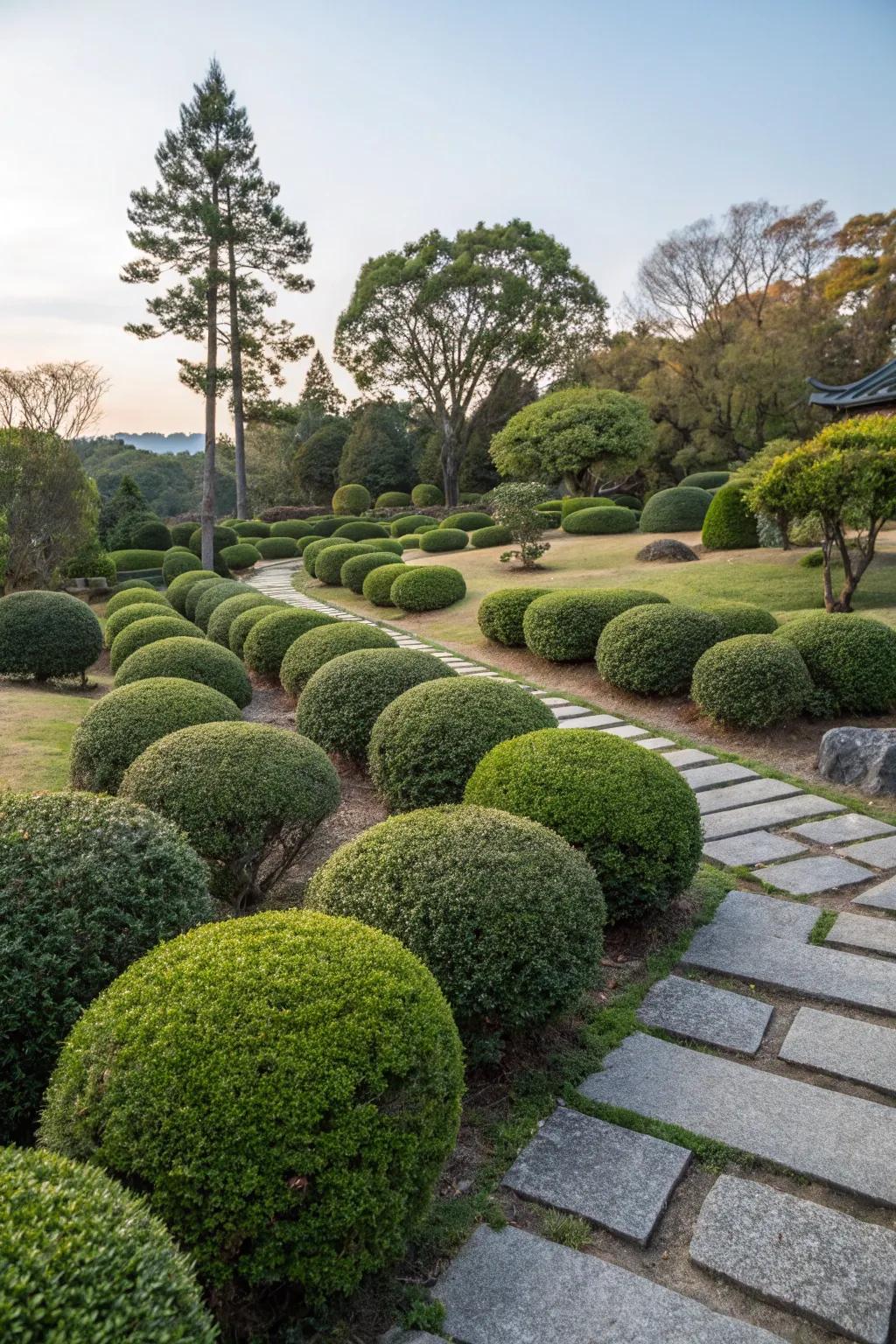
For a bold statement, try mass planting Japanese boxwood and keeping them neatly clipped. The repetitive shapes in my garden create a peaceful, mesmerizing effect.
Possibly handy products:
- Japanese Boxwood Shrubs: Transform your garden with lush Japanese boxwoods, providing elegance and structure year-round.
- Electric Hedge Trimmer: Achieve pristine shapes with ease using this reliable electric hedge trimmer. Perfect for boxwood.
- Garden Pruning Shears: Maintain your boxwoods with precision using high-quality garden pruning shears for clean cuts.
11. Create a Zen Garden
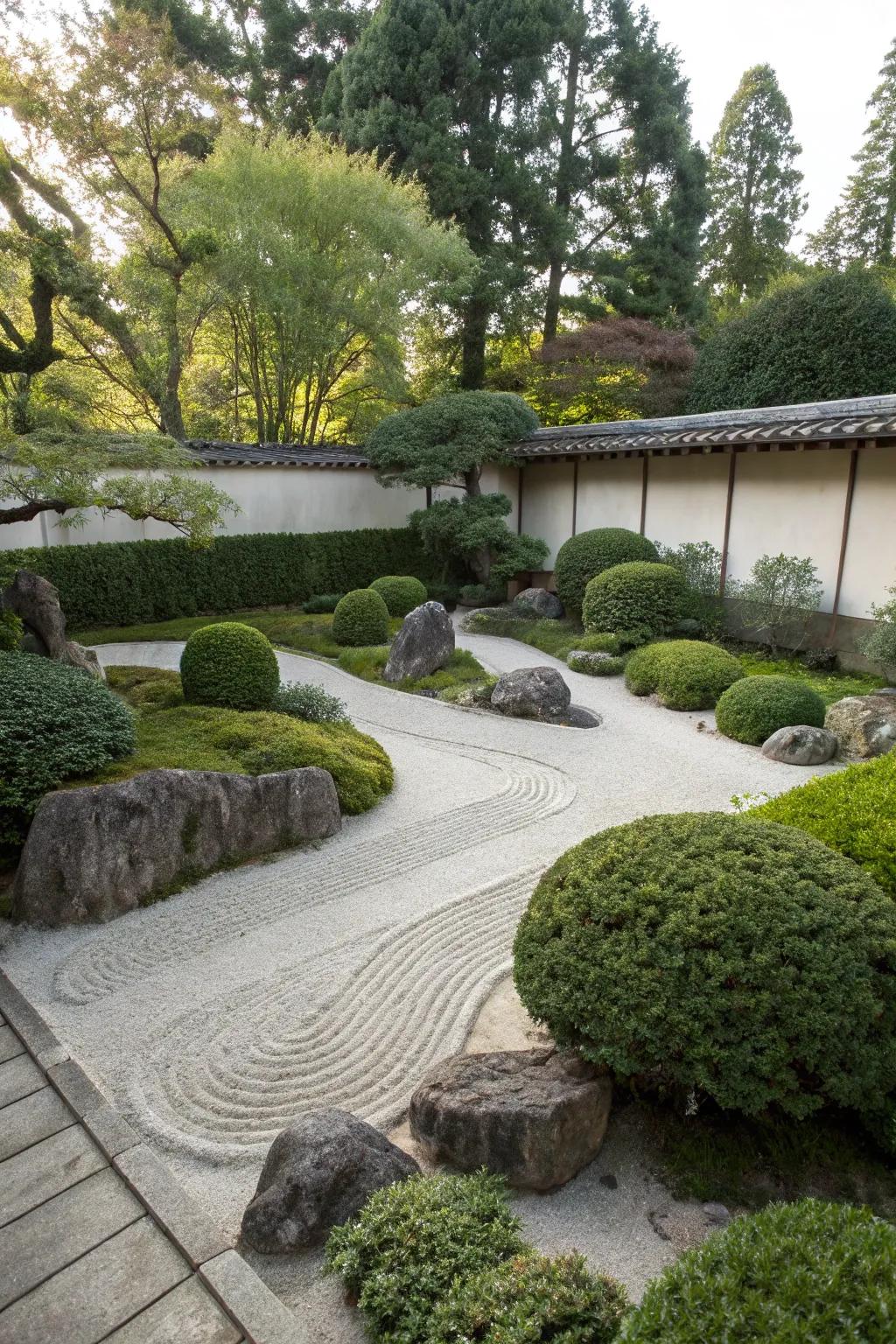
Incorporate Japanese boxwood into a Zen garden for a tranquil retreat. I love the sense of peace they bring when paired with sand and stone elements.
Some handy options:
- Japanese Zen Garden Sand: Enhance your Zen garden tranquility with fine-quality sand, perfect for mindfulness practices.
- Natural Stone Garden Rocks: Add authenticity and structure to your Zen garden with these carefully selected natural stones.
- Japanese Boxwood Plants: Create structured beauty in your Zen retreat using lush, versatile Japanese boxwood plants.
12. Enrich with Color
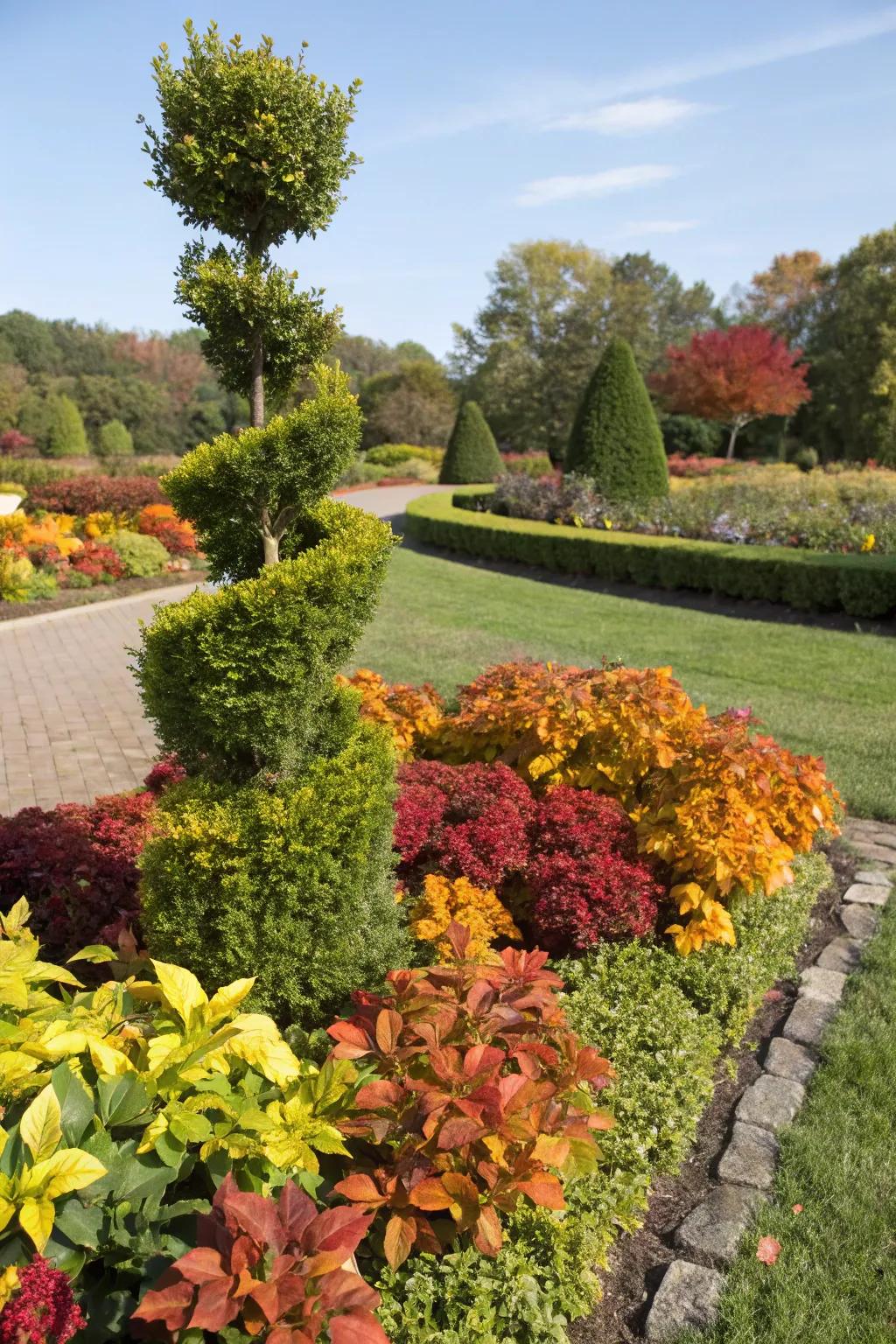
Add interest by contrasting the green of Japanese boxwood with colorful foliage. In my own garden, I love pairing them with burgundy or silver-leaved plants for a striking effect.
A few relevant products:
- Burgundy-Leaved Shrubs: Transform your garden with rich burgundy foliage that perfectly complements Japanese boxwood greenery.
- Silver-Leaved Perennials: Enhance your landscape’s contrast by adding silver-leaved perennials alongside your boxwoods.
- Garden Colorful Foliage Mix: Create eye-catching borders by integrating a mix of colorful foliage with your boxwoods.
13. Craft a Mini Hedge Maze
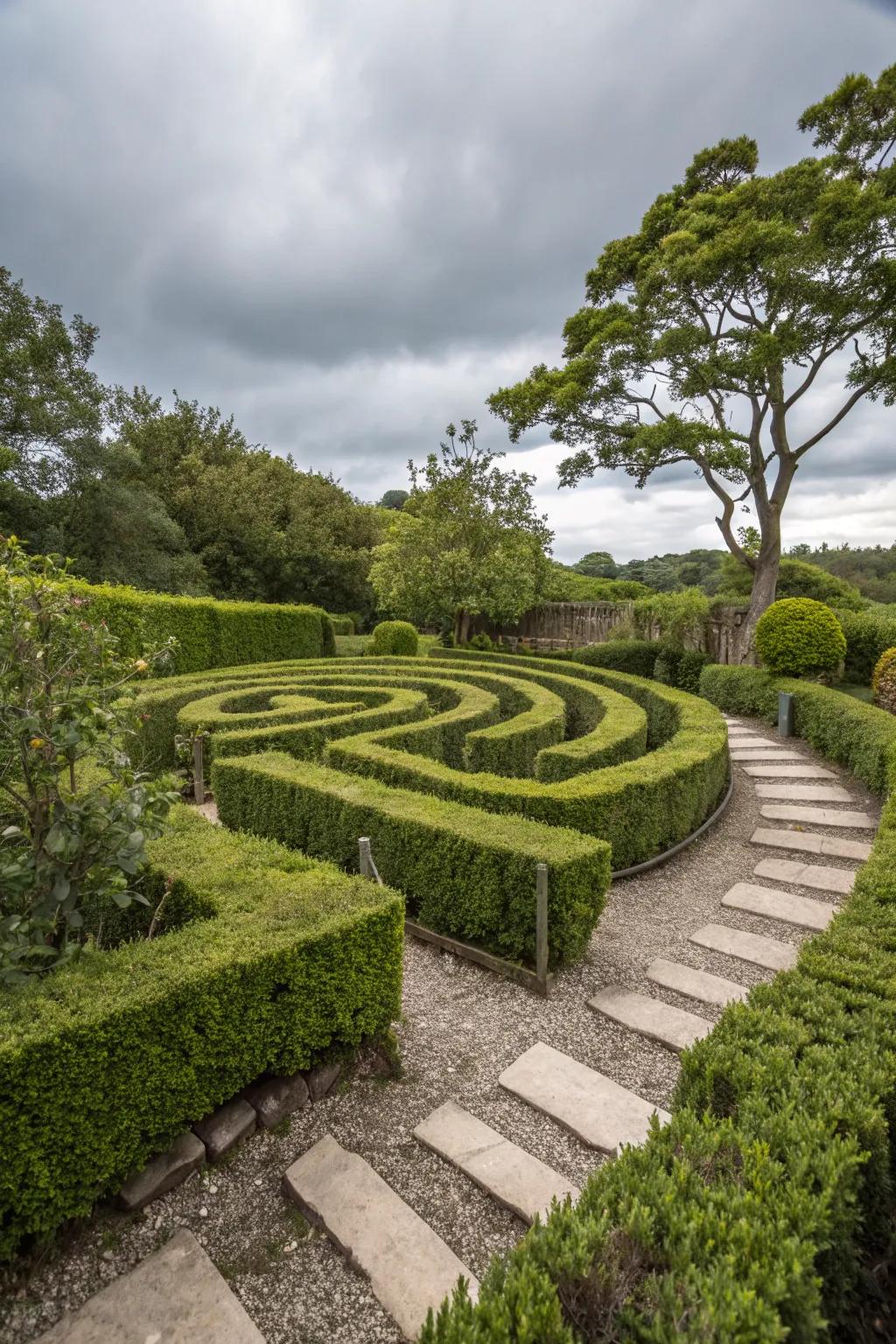
Add a playful element by creating a mini hedge maze with Japanese boxwood. I remember visiting one, and it was a delightful adventure in a small space.
These products might be useful:
- Japanese Boxwood Plants: Create your enchanting mini hedge maze with lush Japanese boxwood plants today.
- Garden Edging Tools: Define your maze’s boundaries cleanly with high-quality garden edging tools.
- Stone Garden Pathway Pavers: Add charm to your maze with durable and elegant stone pathway pavers.
14. Frame Garden Views
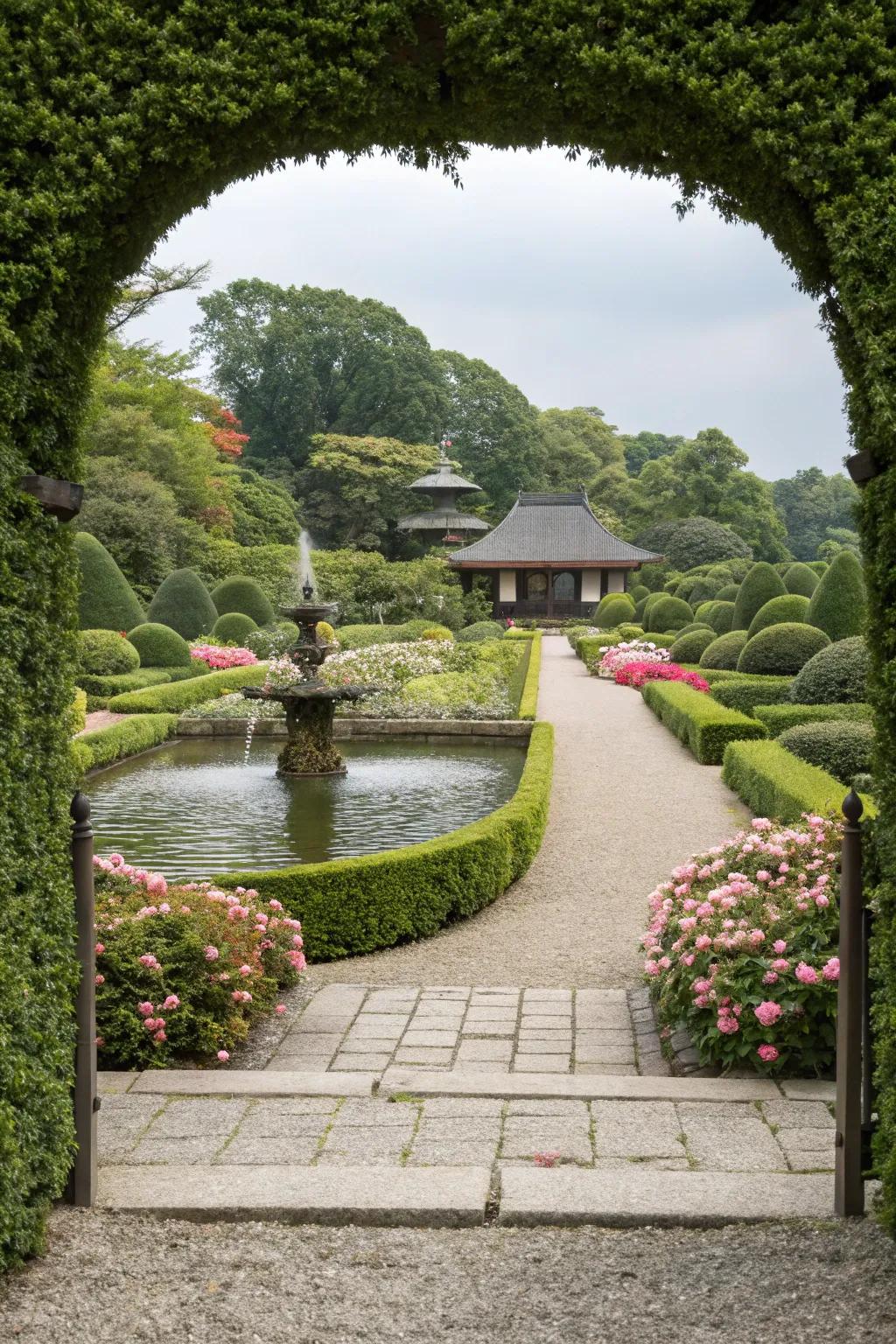
Use Japanese boxwood to frame views within your garden, directing attention to focal points. I’ve used them to highlight my favorite garden features, and they work like a charm.
A few helpful options:
- Japanese Boxwood Plants: Enhance your garden’s appeal by framing views with lush Japanese boxwood plants today.
- Garden Path Lighting: Illuminate your garden path and highlight features to create enchanting evening views.
- Ornamental Garden Statue: Add focus and interest to your garden with a beautifully crafted ornamental statue.
15. Line Your Pathways

Guide your guests with boxwood-lined pathways that offer a charming and structured route through your garden. I love how they provide a clear and elegant flow in my outdoor space.
You might give these a try:
- Artificial Japanese Boxwood Hedges: Enhance your pathways with easy-to-maintain artificial hedges for a lush, evergreen appearance.
- Garden Edging Pavers: Define your garden paths with durable pavers that offer a clean and polished look.
- Outdoor Solar Pathway Lights: Illuminate your garden paths with solar lights, enhancing safety and evening ambiance effortlessly.
16. Design a Labyrinth
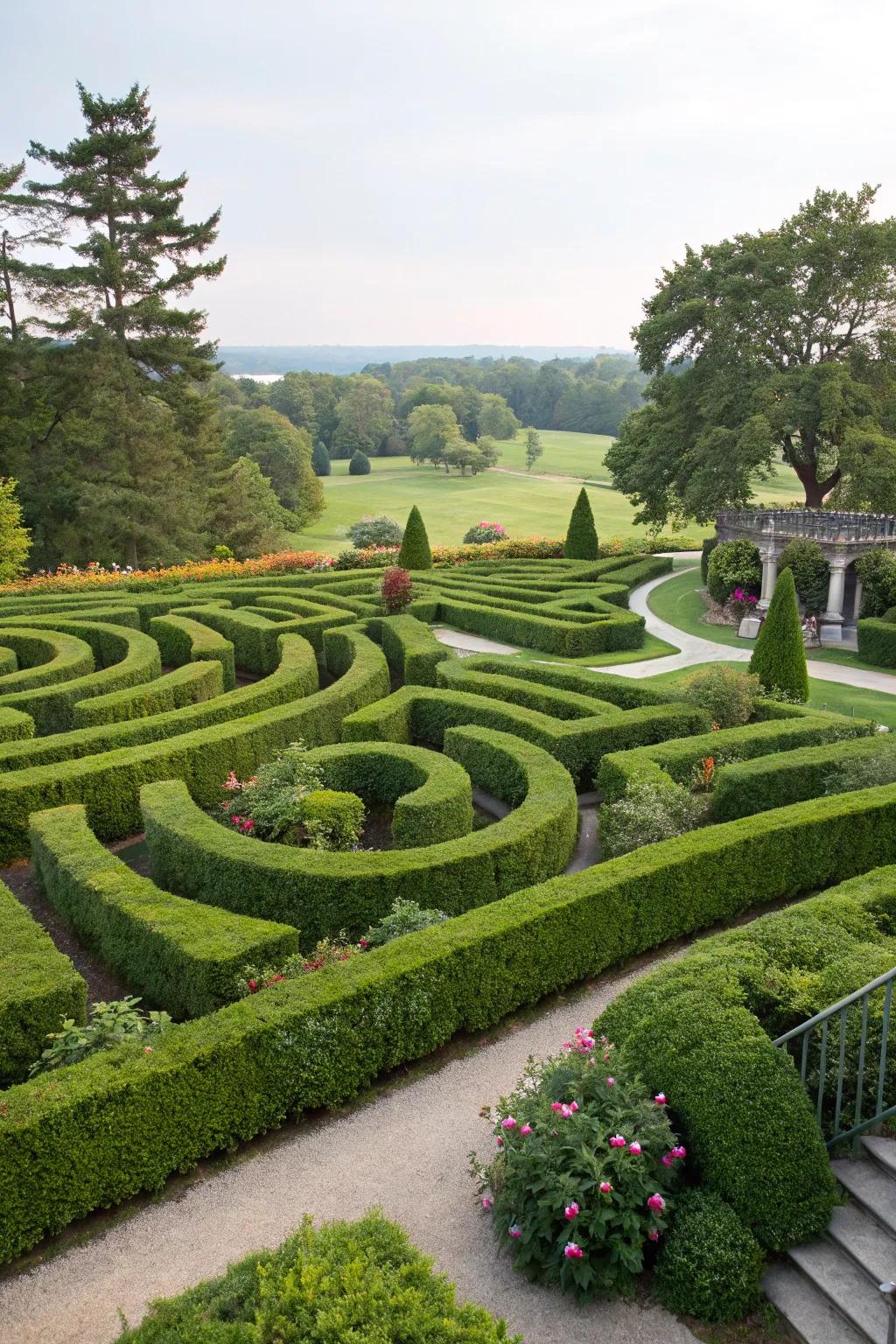
Feeling adventurous? Try crafting a boxwood labyrinth for a fun and interactive garden feature. I’ve seen these in larger gardens, and they’re always a delightful surprise.
Some ideas to consider:
- Japanese Boxwood Plant: Enhance your labyrinth with lush Japanese boxwood for a classic, evergreen aesthetic.
- Hedge Trimming Shears: Keep your labyrinth neat with precision pruning tools for perfectly trimmed hedges.
- Garden Soil Conditioner: Boost your boxwood growth with quality soil conditioner for a vibrant labyrinth.
17. Define Borders and Edges
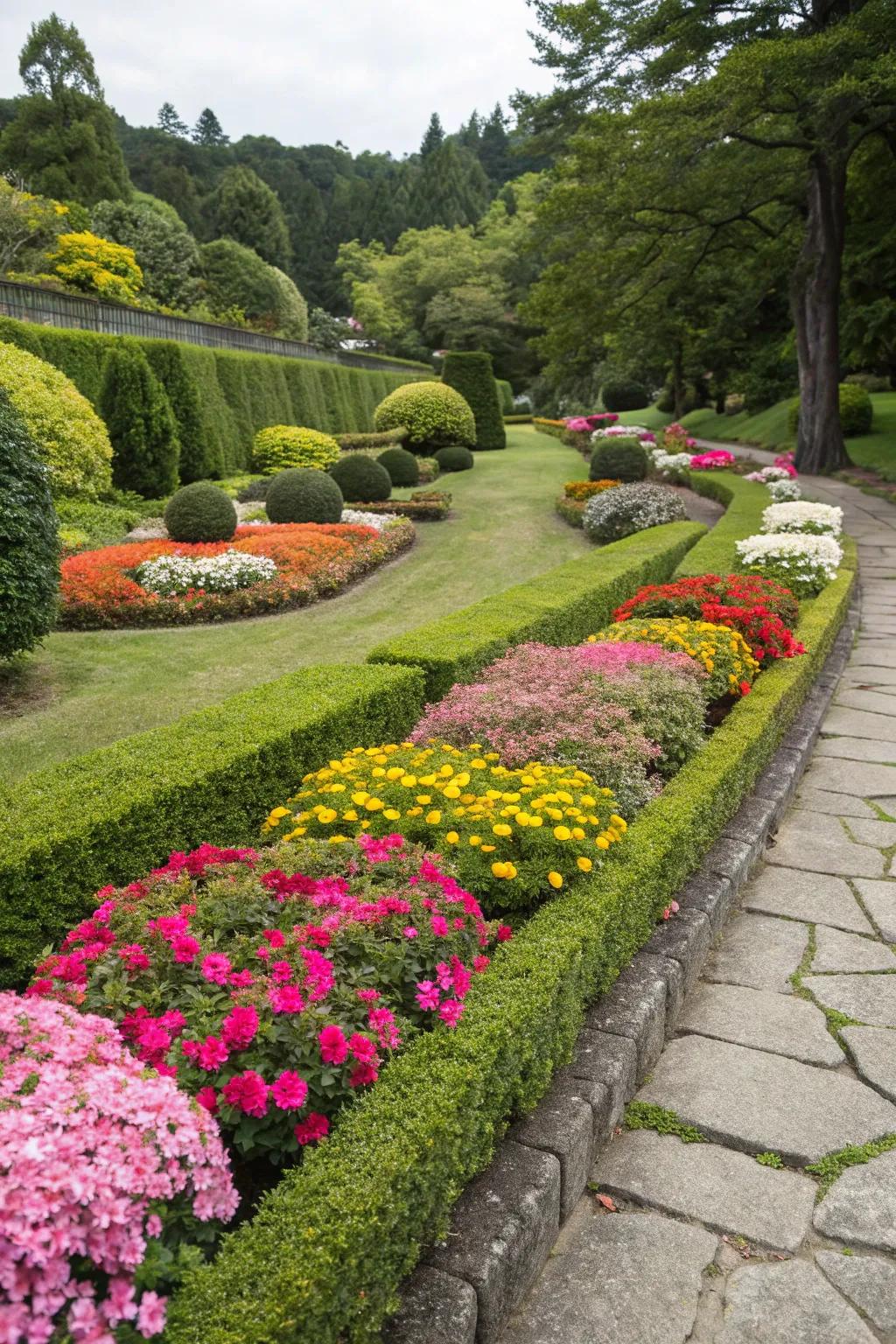
Use Japanese boxwood as borders and edges to define different areas of your garden. I’ve found they provide a crisp finish to my flower beds, adding a touch of sophistication.
Try these:
- Garden Edging Tool: Create clean, professional borders effortlessly. Enhance your garden’s elegance with this easy-to-use tool.
- Boxwood Fertilizer: Boost your Japanese boxwoods’ growth and richness with this specially formulated fertilizer.
- Adjustable Hedge Shears: Shape precise, tidy boxwood borders easily with these adjustable, sharp hedge shears.
18. Mix with Flowering Plants
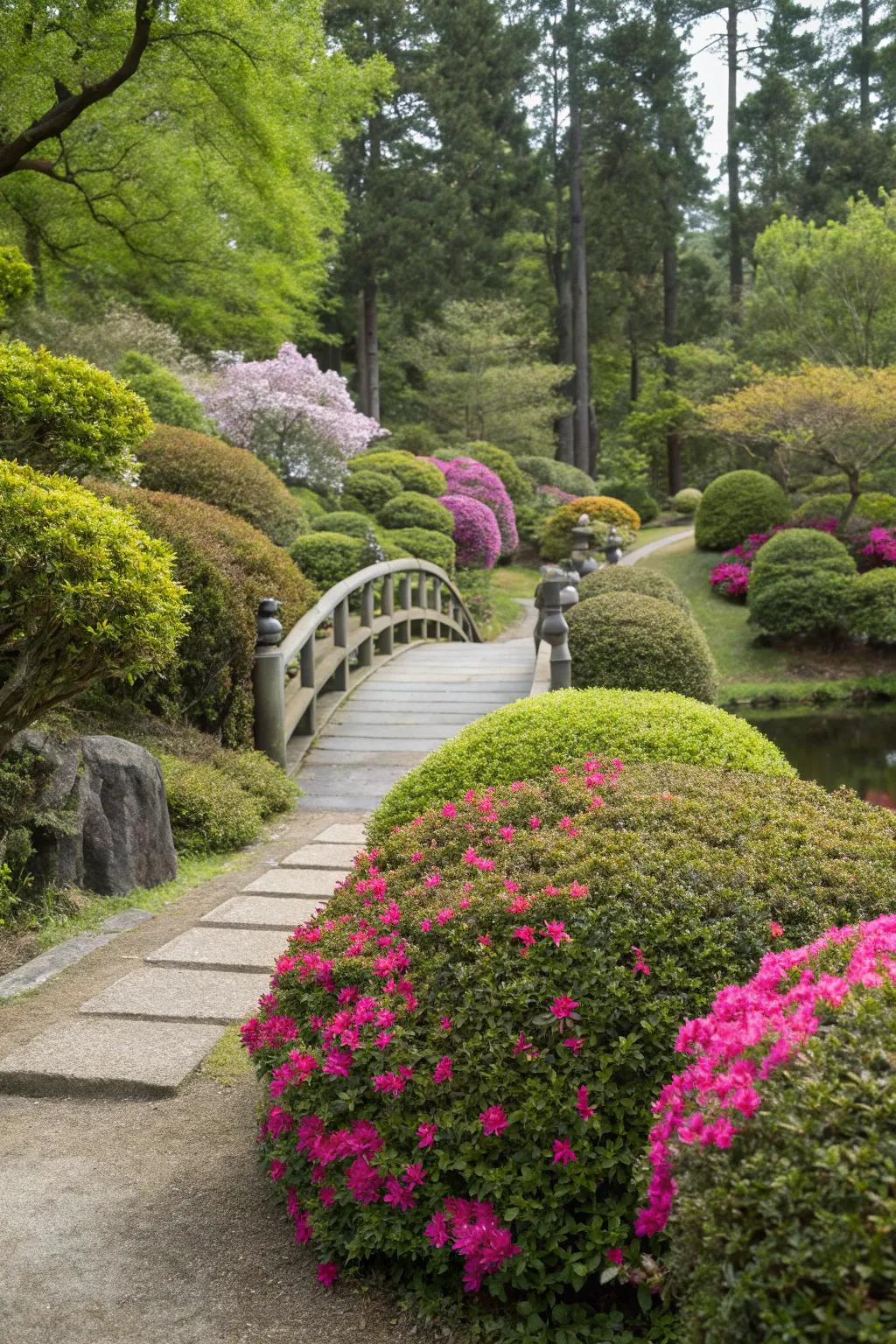
Pair Japanese boxwood with flowering plants for a vibrant mix of colors and textures. In my garden, they provide a stunning contrast to my blooming hydrangeas.
You might like:
- Flowering Shrub Collection: Transform your garden with vibrant flowering shrubs, perfect for complementing Japanese boxwood.
- Perennial Flower Seeds Mix: Enhance your landscape with a mix of perennial flowers, offering seasonal color variations.
- Garden Fertilizer for Flowering Plants: Boost your plants’ growth and blooms with specialized garden fertilizer designed for flowering plants.
19. Topiary Artistry
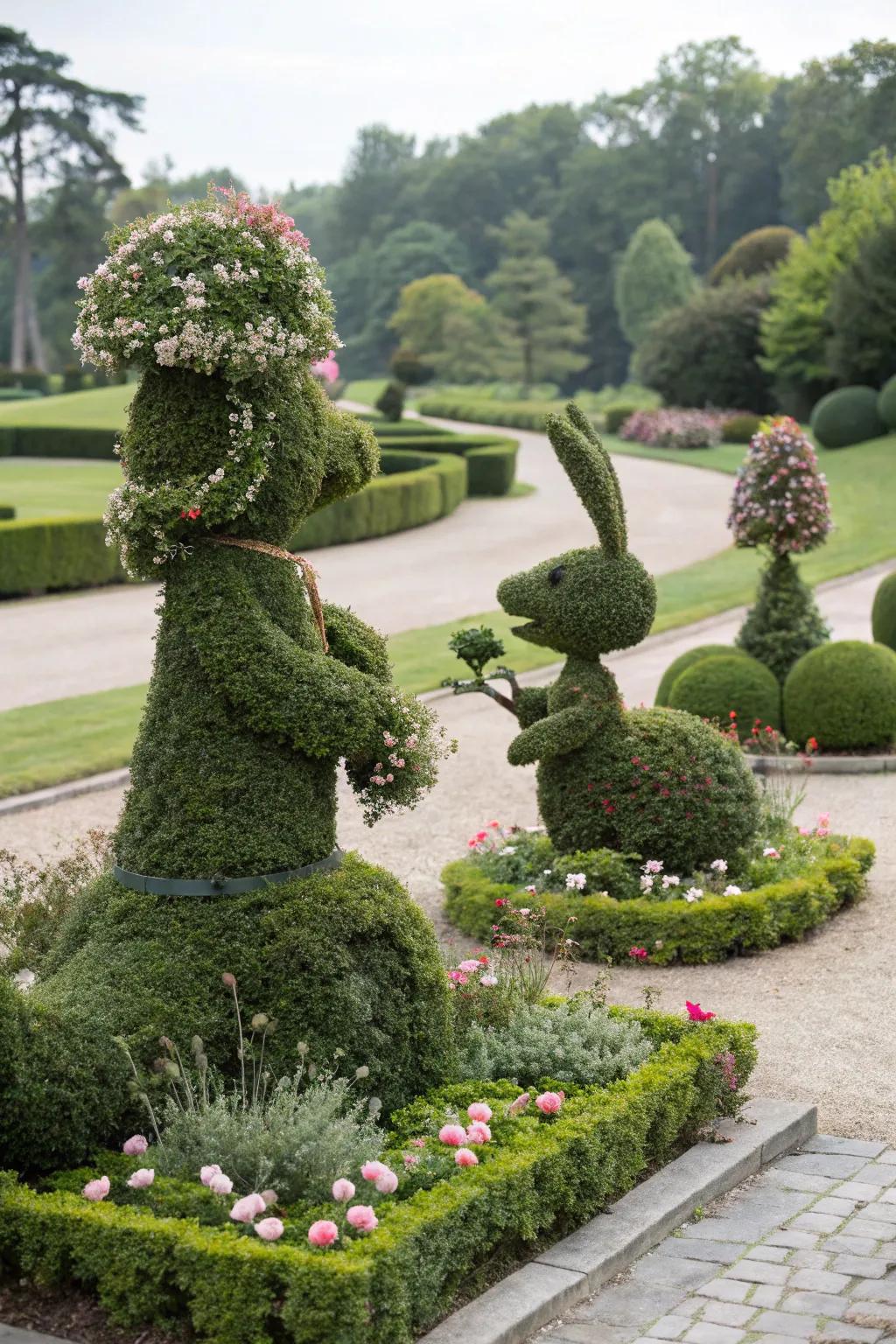
Get creative with topiary designs by sculpting Japanese boxwood into whimsical shapes. In my garden, I’ve played around with animal shapes, and they always bring a smile.
These products might help:
- Topiary Shears: Achieve precise cuts for your boxwood shapes with these ergonomic topiary shears. Transform plants with ease!
- Topiary Frame Kits: Guide your creativity with durable frames for crafting stunning boxwood topiary shapes. Perfect your artistry!
- Boxwood Fertilizer: Nourish your topiary masterpieces with this specialized boxwood fertilizer for vibrant, healthy greenery.
20. Add to Window Boxes

Pop some Japanese boxwood into window boxes for year-round greenery. They’re a charming addition to my home, offering a classic look that pairs well with seasonal flowers.
A few suggestions:
- Self-Watering Window Box Planters: Keep your Japanese boxwoods thriving with minimal effort. Enjoy lush greenery all year round.
- Organic Potting Soil for Shrubs: Enhance the health of your Japanese boxwoods with nutrient-rich organic soil. Perfect for vibrant growth.
- Heavy Duty Window Box Brackets: Secure your window boxes with sturdy brackets. Ensure stability for your beautiful plant displays.
